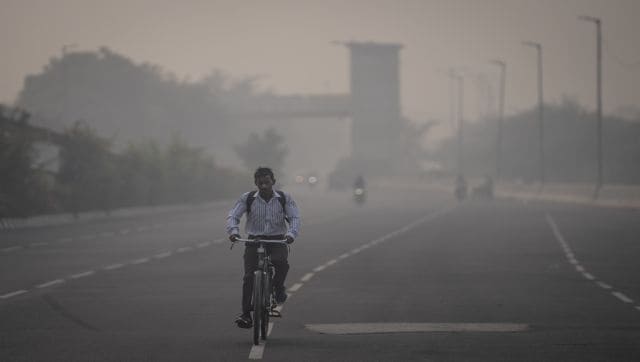Delhi AQI improves slightly, pollution drops from ‘severe’ to ‘very poor’ category

Representational image. AP
On Saturday morning, there was a slight improvement in the air quality of New Delhi, shifting from the ‘severe’ category to ‘very poor.’
The overall Air Quality Index (AQI) in the national capital decreased from 461 on Friday at 7 am to 398 this morning.
Despite this marginal improvement, residents found little relief as a dense and toxic haze continued to envelop the city.
Related Articles
The System of Air Quality and Weather Forecasting And Research (SAFAR-India) reported an AQI of 398 at Ghazipur at 7:15 am on Saturday.
Expressing concern over the escalating air pollution, Delhi Environment Minister Gopal Rai sought the intervention of the Centre on Friday to address the city’s deteriorating air quality. Rai highlighted that this situation extended beyond Delhi, affecting 12 districts in Haryana, 14 locations in Rajasthan, and several districts in western Uttar Pradesh, all experiencing ‘severe’ air quality.
On Thursday, Rai announced the formation of a 6-member special task force, led by the Environment Special Secretary, to ensure the proper implementation and monitoring of GRAP rules.
Analysing the aftermath of Diwali celebrations, data from the National Clean Air Programme (NCAP) tracker revealed that nine out of eleven state capitals in India experienced higher pollution in the first 12 hours post-Diwali compared to the previous year. The highest spike in PM 2.5 levels was observed in Delhi, reaching 999.5 ug/m3 at Pusa on November 13 at 1:30 am.
With inputs from ANI

Atul Tiwari is a seasoned journalist at Mumbai Times, specializing in city news, culture, and human-interest stories. With a knack for uncovering compelling narratives, Atul brings Mumbai’s vibrant spirit to life through his writing.







